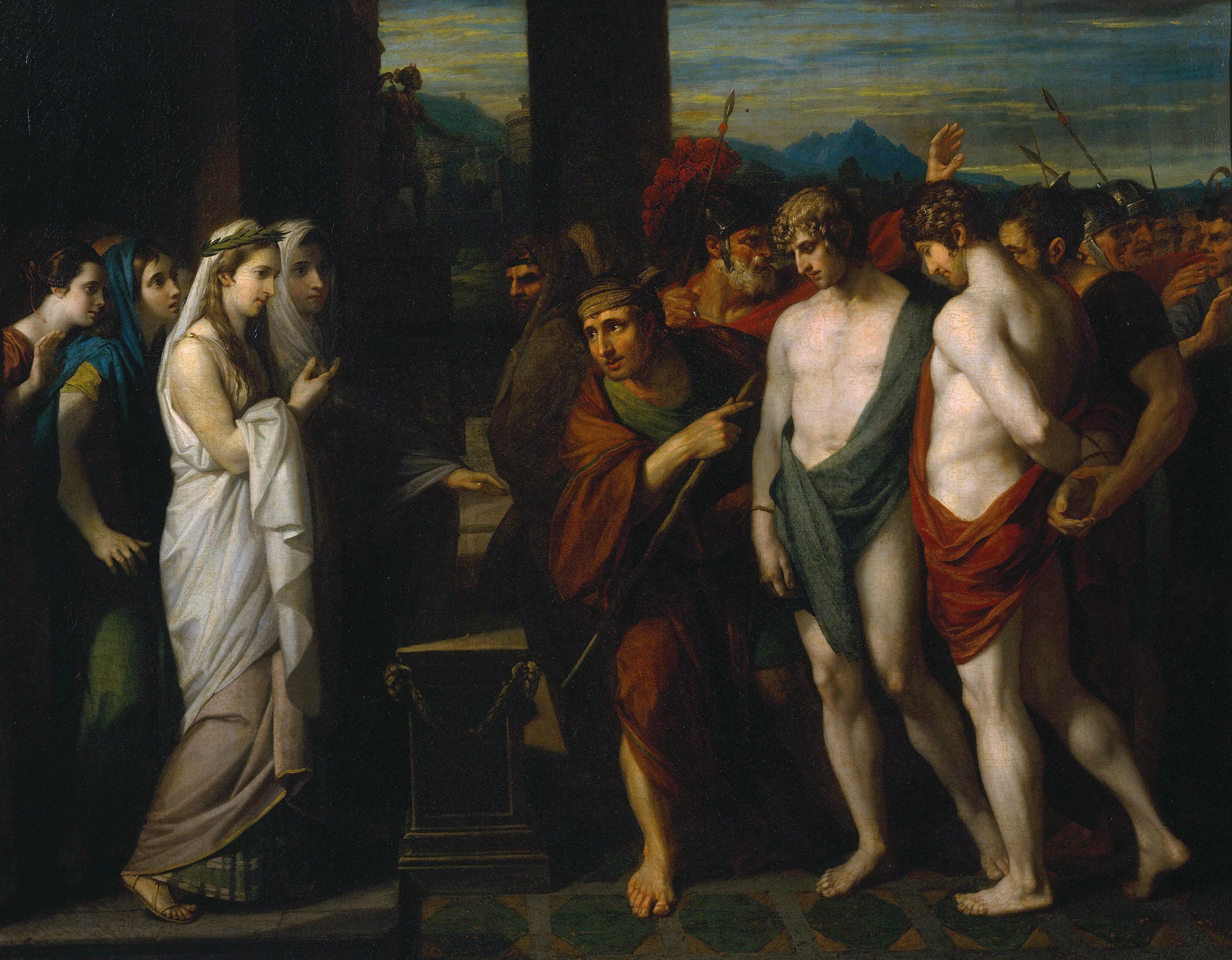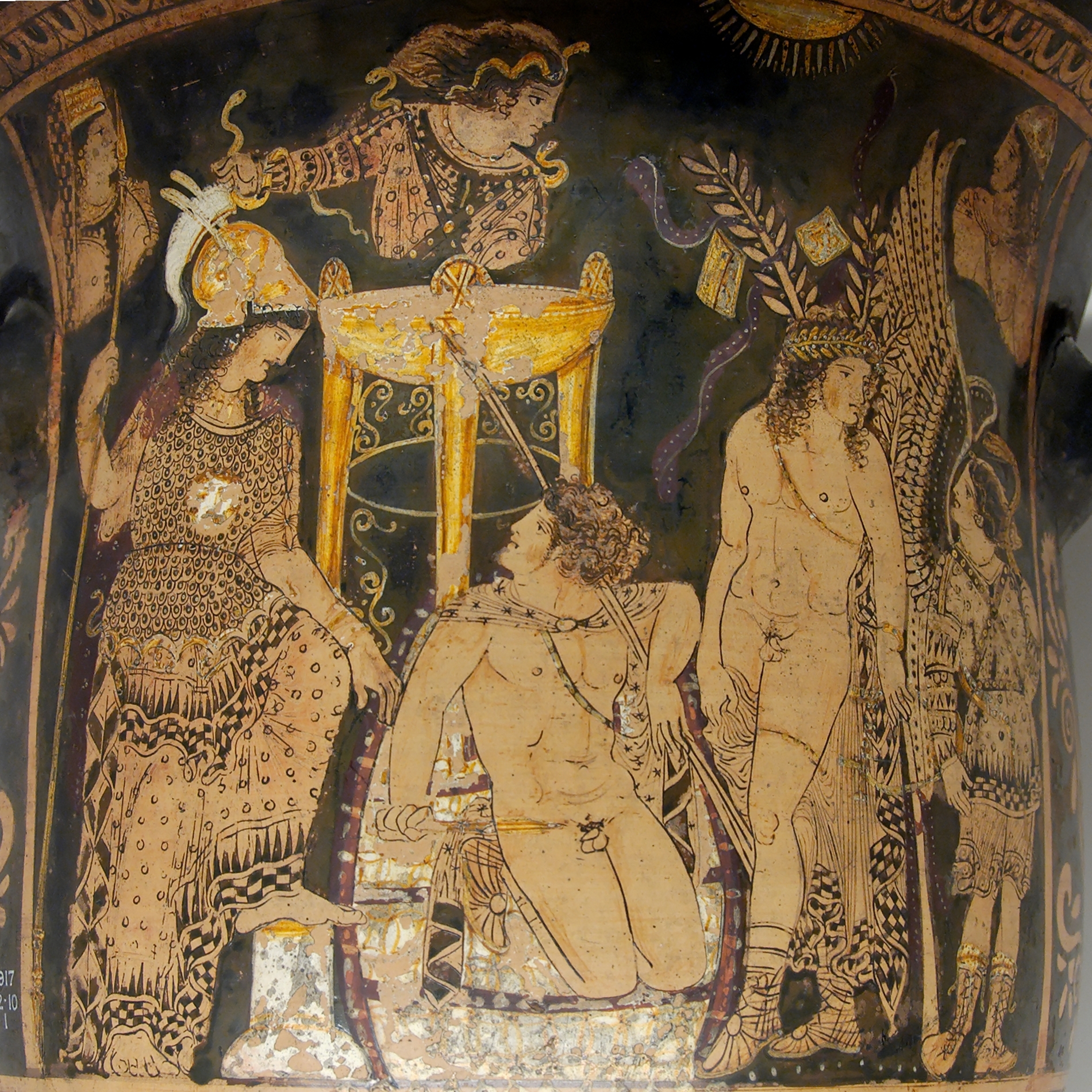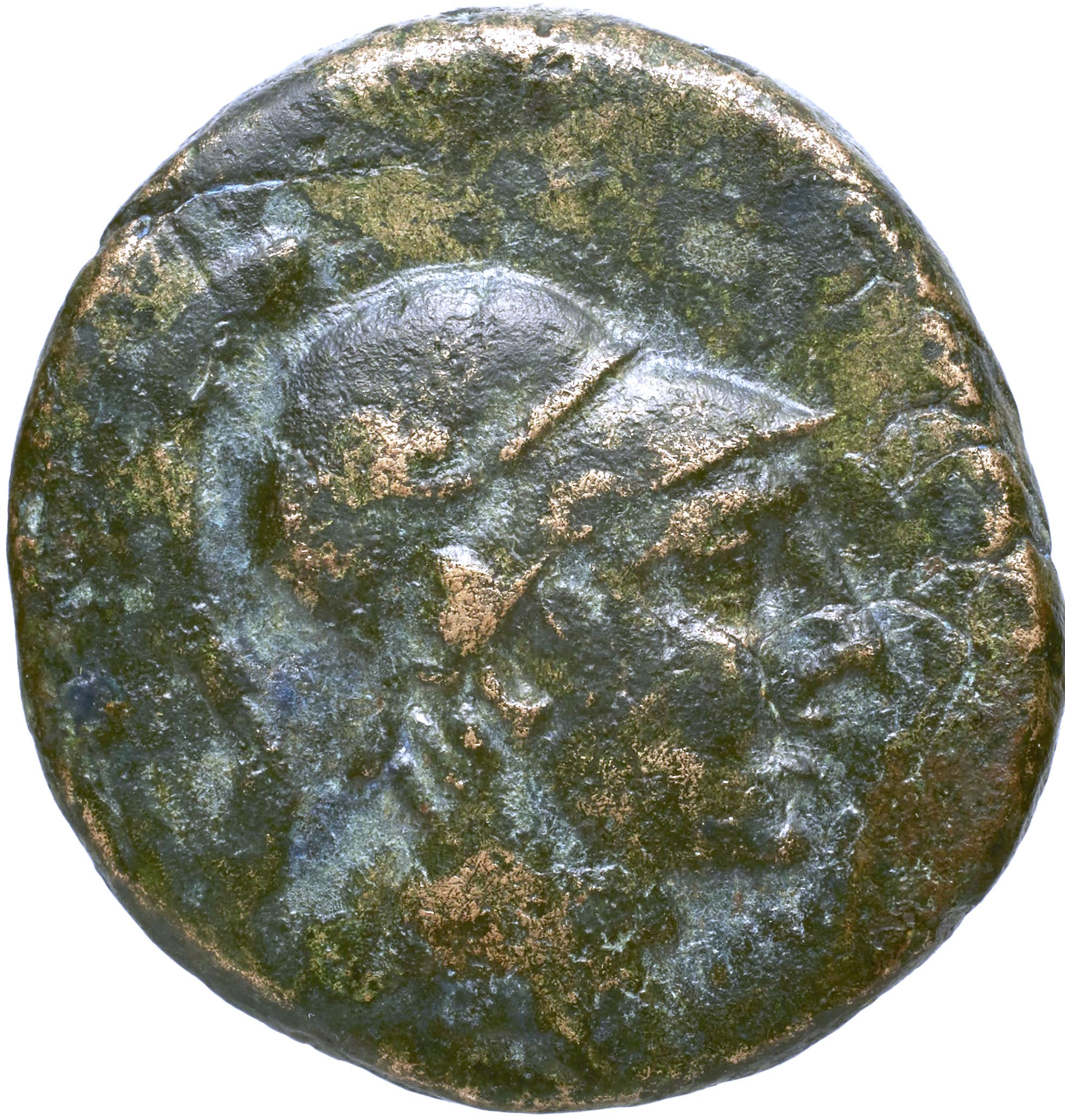|
Tauri
The Tauri (; in Ancient Greek), or Taurians, also Scythotauri, Tauri Scythae, Tauroscythae (Pliny, ''H. N.'' 4.85) were an ancient people settled on the southern coast of the Crimea peninsula, inhabiting the Crimean Mountains in the 1st millennium BC and the narrow strip of land between the mountains and the Black Sea. According to the sources, the Taurians were the first inhabitants of the Crimean peninsula and never abandoned its borders. They gave their name to the peninsula, which was known in ancient times as ''Taurica'', ''Taurida'' and ''Tauris''. Assimilation Taurians intermixed with the Scythians starting from the end of 3rd century BC, and were mentioned as Tauroscythians and Scythotaurians in the works of ancient Greek writers. The Taurians underwent the rule of the Pontic Kingdom in the 2nd century BC. As a result of Roman occupations, Taurians were romanized in the first century AD. Later the Taurians were subsumed by the Alans and Goths, and existed till the 4th ... [...More Info...] [...Related Items...] OR: [Wikipedia] [Google] [Baidu] |
Iphigeneia In Tauris
''Iphigenia in Tauris'' ( grc, Ἰφιγένεια ἐν Ταύροις, ''Iphigeneia en Taurois'') is a drama by the playwright Euripides, written between 414 BC and 412 BC. It has much in common with another of Euripides's plays, ''Helen'', as well as the lost play '' Andromeda'', and is often described as a romance, a melodrama, a tragi-comedy or an escape play. Although the play is generally known in English as ''Iphigenia in Tauris'', this is, strictly speaking, the Latin title of the play (corresponding to the Greek Ἰφιγένεια ἐν Ταύροις), the meaning of which is ''Iphigenia among the Taurians''. There is no such place as "Tauris" in Euripides' play, although Goethe, in his play ''Iphigenie auf Tauris'' (on which Gluck's opera ''Iphigénie en Tauride'' is based), ironically utilising this translation error, posits such a place. The name refers to the Crimean Peninsula (ancient ''Taurikḗ''). Background Years before the time period covered by the play, th ... [...More Info...] [...Related Items...] OR: [Wikipedia] [Google] [Baidu] |
History Of Crimea
The recorded history of the Crimean Peninsula, historically known as ''Tauris'', ''Taurica'' ( gr, Ταυρική or Ταυρικά), and the ''Tauric Chersonese'' ( gr, Χερσόνησος Ταυρική, "Tauric Peninsula"), begins around the 5th century BCE when several Greek colonies were established along its coast, the most important of which was Chersonesos near modern day Sevastopol, with Scythians and Tauri in the hinterland to the north. The southern coast gradually consolidated into the Bosporan Kingdom which was annexed by Pontus and then became a client kingdom of Rome (63 BCE – 341 AD). The south coast remained Greek in culture for almost two thousand years including under Roman successor states, the Byzantine Empire (341 AD – 1204 AD), the Empire of Trebizond (1204 AD – 1461 AD), and the independent Principality of Theodoro (ended 1475 AD). In the 13th century, some Crimean port cities were controlled by the Venetians and by the Genovese, but the interior w ... [...More Info...] [...Related Items...] OR: [Wikipedia] [Google] [Baidu] |
Taurica
The recorded history of the Crimean Peninsula, historically known as ''Tauris'', ''Taurica'' ( gr, Ταυρική or Ταυρικά), and the ''Tauric Chersonese'' ( gr, Χερσόνησος Ταυρική, "Tauric Peninsula"), begins around the 5th century BCE when several Greek colonies were established along its coast, the most important of which was Chersonesos near modern day Sevastopol, with Scythians and Tauri in the hinterland to the north. The southern coast gradually consolidated into the Bosporan Kingdom which was annexed by Pontus and then became a client kingdom of Rome (63 BCE – 341 AD). The south coast remained Greek in culture for almost two thousand years including under Roman successor states, the Byzantine Empire (341 AD – 1204 AD), the Empire of Trebizond (1204 AD – 1461 AD), and the independent Principality of Theodoro (ended 1475 AD). In the 13th century, some Crimean port cities were controlled by the Venetians and by the Genovese, but the interior w ... [...More Info...] [...Related Items...] OR: [Wikipedia] [Google] [Baidu] |
Iphigeneia
In Greek mythology, Iphigenia (; grc, Ἰφιγένεια, , ) was a daughter of King Agamemnon and Queen Clytemnestra, and thus a princess of Mycenae. In the story, Agamemnon offends the goddess Artemis on his way to the Trojan War by hunting and killing one of Artemis' sacred stags. She retaliates by preventing the Greek troops from reaching Troy unless Agamemnon kills his eldest daughter, Iphigenia, at Aulis as a human sacrifice. In some versions, Iphigenia dies at Aulis, and in others, Artemis rescues her. In the version where she is saved, she goes to the Taurians and meets her brother Orestes.Evans (1970), p. 141 Name "Iphigenia" means "strong-born," "born to strength," or "she who causes the birth of strong offspring." Iphianassa Iphianassa () is the name of one of Agamemnon's three daughters in Homer's ''Iliad'' (ix.145, 287) The name Iphianassa may be simply an older variant of the name Iphigenia. "Not all poets took Iphigenia and Iphianassa to be two names for the s ... [...More Info...] [...Related Items...] OR: [Wikipedia] [Google] [Baidu] |
Crimea
Crimea, crh, Къырым, Qırım, grc, Κιμμερία / Ταυρική, translit=Kimmería / Taurikḗ ( ) is a peninsula in Ukraine, on the northern coast of the Black Sea, that has been occupied by Russia since 2014. It has a population of 2.4 million. The peninsula is almost entirely surrounded by the Black Sea and the smaller Sea of Azov. The Isthmus of Perekop connects the peninsula to Kherson Oblast in mainland Ukraine. To the east, the Crimean Bridge, constructed in 2018, spans the Strait of Kerch, linking the peninsula with Krasnodar Krai in Russia. The Arabat Spit, located to the northeast, is a narrow strip of land that separates the Sivash lagoons from the Sea of Azov. Across the Black Sea to the west lies Romania and to the south is Turkey. Crimea (called the Tauric Peninsula until the early modern period) has historically been at the boundary between the classical world and the steppe. Greeks colonized its southern fringe and were absorbed by the Ro ... [...More Info...] [...Related Items...] OR: [Wikipedia] [Google] [Baidu] |
Chersonesos Taurica
Chersonesus ( grc, Χερσόνησος, Khersónēsos; la, Chersonesus; modern Russian and Ukrainian: Херсоне́с, ''Khersones''; also rendered as ''Chersonese'', ''Chersonesos'', contracted in medieval Greek to Cherson Χερσών; Old East Slavic: Корсунь, ''Korsun'') is an ancient Greek colony founded approximately 2,500 years ago in the southwestern part of the Crimean Peninsula. Settlers from Heraclea Pontica in Bithynia established the colony in the 6th century BC. The ancient city is located on the shore of the Black Sea on the outskirts of present-day Sevastopol on the Crimean Peninsula, where it is referred to as ''Khersones''. The site is part of the ''National Preserve of Tauric Chersonesos''. The name ''Chersonesos'' in Greek means "peninsula" and aptly describes the site on which the colony was established. It should not be confused with the ''Tauric Chersonese'', a name often applied to the whole of the southern Crimea. During much of the c ... [...More Info...] [...Related Items...] OR: [Wikipedia] [Google] [Baidu] |
Roman Crimea
The Crimean Peninsula (at the time known as ''Taurica'') was under partial control of the Roman Empire during the period of 47 BC to c. 340 AD. The territory under Roman control mostly coincided with the Bosporan Kingdom (although under Nero, from 62 to 68 AD; it was briefly attached to the Roman Province of Moesia Inferior). Rome lost its influence in Taurica in the mid third century AD, when substantial parts of the peninsula fell to the Goths, but at least nominally the kingdom survived until the 340s AD. The Eastern Roman Empire, the eastern part of the Roman Empire that survived the loss of the western part of the empire, later regained Crimea under Justinian I. The Byzantine Empire controlled portions of the peninsula well into the Late Middle Ages. Roman Empire Rome started to dominate the Crimea peninsula (then called ''Taurica'') in the 1st century BC. The initial area of their penetration was mainly in eastern Crimea (Bosporus kingdom) and in the western Greek city of C ... [...More Info...] [...Related Items...] OR: [Wikipedia] [Google] [Baidu] |
Orestes
In Greek mythology, Orestes or Orestis (; grc-gre, Ὀρέστης ) was the son of Clytemnestra and Agamemnon, and the brother of Electra. He is the subject of several Ancient Greek plays and of various myths connected with his madness and purification, which retain obscure threads of much older ones. Etymology The Greek name Ὀρέστης, having become "Orestēs" in Latin and its descendants, is derived from Greek ὄρος (óros, “mountain”) and ἵστημι (hístēmi, “to stand”), and so can be thought to have the meaning "stands on a mountain". Greek literature Homer In the Homeric telling of the story, Orestes is a member of the doomed house of Atreus, which is descended from Tantalus and Niobe. He is absent from Mycenae when his father, Agamemnon, returns from the Trojan War with the Trojan princess Cassandra as his concubine, and thus not present for Agamemnon's murder by Aegisthus, the lover of his wife, Clytemnestra. Seven years later, Orestes retu ... [...More Info...] [...Related Items...] OR: [Wikipedia] [Google] [Baidu] |
Scythia
Scythia (Scythian: ; Old Persian: ; Ancient Greek: ; Latin: ) or Scythica (Ancient Greek: ; Latin: ), also known as Pontic Scythia, was a kingdom created by the Scythians during the 6th to 3rd centuries BC in the Pontic–Caspian steppe. History Background Origins of the Scythians The Scythians originated in Central Asia possibly around the 9th century BC, and they arrived in the Caucasian Steppe in the 8th and 7th centuries BC as part of a significant movement of the nomadic peoples of the Eurasian Steppe. This movement started when another nomadic Iranian tribe closely related to the Scythians, either the Massagetae or the Issedones, migrated westwards, forcing the Early Scythians to the west across the Araxes river, following which the Scythians moved into the Caspian Steppe, where they conquered the territory of the Cimmerians, who were also a nomadic Iranian people closely related to the Scythians, and assimilated most of them while displacing the rest, before settling ... [...More Info...] [...Related Items...] OR: [Wikipedia] [Google] [Baidu] |
Kingdom Of Pontus
Pontus ( grc-gre, Πόντος ) was a Hellenistic kingdom centered in the historical region of Pontus and ruled by the Mithridatic dynasty (of Persian origin), which possibly may have been directly related to Darius the Great of the Achaemenid dynasty. The kingdom was proclaimed by Mithridates I in 281BC and lasted until its conquest by the Roman Republic in 63BC. The Kingdom of Pontus reached its largest extent under Mithridates VI the Great, who conquered Colchis, Cappadocia, Bithynia, the Greek colonies of the Tauric Chersonesos, and for a brief time the Roman province of Asia. After a long struggle with Rome in the Mithridatic Wars, Pontus was defeated. The western part of it was incorporated into the Roman Republic as the province Bithynia et Pontus; the eastern half survived as a client kingdom until 62 AD. As the greater part of the kingdom lay within the region of Cappadocia, which in early ages extended from the borders of Cilicia to the Euxine (Black Sea), the king ... [...More Info...] [...Related Items...] OR: [Wikipedia] [Google] [Baidu] |
Artemis
In ancient Greek mythology and religion, Artemis (; grc-gre, Ἄρτεμις) is the goddess of the hunt, the wilderness, wild animals, nature, vegetation, childbirth, care of children, and chastity. She was heavily identified with Selene, the Moon, and Hecate, another Moon goddess, and was thus regarded as one of the most prominent lunar deities in mythology, alongside the aforementioned two.Smiths.v. Artemis/ref> She would often roam the forests of Greece, attended by her large entourage, mostly made up of nymphs, some mortals, and hunters. The goddess Diana is her Roman equivalent. In Greek tradition, Artemis is the daughter of the sky god and king of gods Zeus and Leto, and the twin sister of Apollo. In most accounts, the twins are the products of an extramarital liaison. For this, Zeus' wife Hera forbade Leto from giving birth anywhere on land. Only the island of Delos gave refuge to Leto, allowing her to give birth to her children. Usually, Artemis i ... [...More Info...] [...Related Items...] OR: [Wikipedia] [Google] [Baidu] |
Scythians
The Scythians or Scyths, and sometimes also referred to as the Classical Scythians and the Pontic Scythians, were an Ancient Iranian peoples, ancient Eastern Iranian languages, Eastern * : "In modern scholarship the name 'Sakas' is reserved for the ancient tribes of northern and eastern Central Asia and Eastern Turkestan to distinguish them from the related Massagetae of the Aral region and the Scythians of the Pontic steppes. These tribes spoke Iranian languages, and their chief occupation was nomadic pastoralism." * : "Near the end of the 19th century V.F. Miller (1886, 1887) theorized that the Scythians and their kindred, the Sauromatians, were Iranian-speaking peoples. This has been a popular point of view and continues to be accepted in linguistics and historical science [...]" * : "From the end of the 7th century B.C. to the 4th century B.C. the Central- Eurasian steppes were inhabited by two large groups of kin Iranian-speaking tribes – the Scythians and Sarmatians [.. ... [...More Info...] [...Related Items...] OR: [Wikipedia] [Google] [Baidu] |










